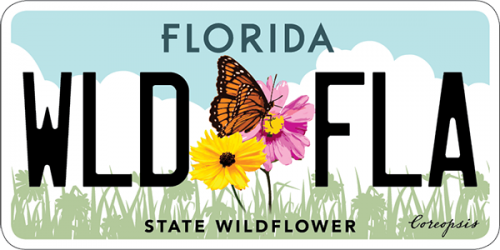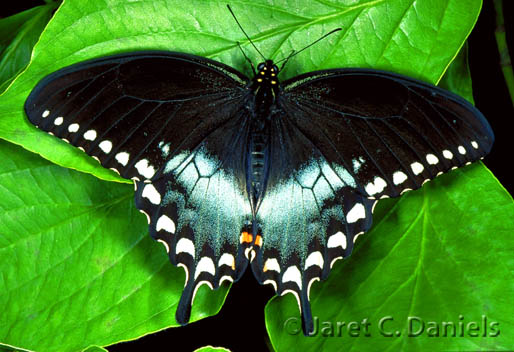- Family name: Papilionidae/Swallowtails
- General description: Black with pale blue-green marginal spots. Hindwing with single tail and a large orange spot along costal margin. Hindwing with prominent greenish flush (males) or reduced diffuse blue scaling (females). Ventral hindwing with two rows of orange spots enclosing diffuse blue scaling. Median orange band incomplete and invaded by blue scaling. Abdomen with longitudinal rows of small light spots.
- Field Marks: Single hindwing tail; hindwing with large pale blue-green marginal spots; hindwing with single orange spot along costal margin; ventral hindwing with incomplete median orange spot band (invaded by blue)
- Sexes: appear similar
- Wingspan: 90-115 mm
- Life Cycle: Egg: light greenish-white, spherical, laid singly on host leaves Mature larva: Green above, reddish-brown below with a yellow lateral line and several rows of small blue spots; thorax enlarged with two prominent yellow-rimmed black eyespots and two yellow-orange spots. Chrysalis: brown or green
- Number of Generations: Three or more
- Flight Season: February-October
- Abundance: Common
- Habitat: Woodlands, forest margins, parks, gardens, roadsides, pastures, and meadows
- Larval Host Plants: Sassafras (Sassafras albidum), spicebush (Lindera benzoin), red bay (Persea borbonia), swamp bay (Persea palustris), camphor tree (Cinnamomum camphora)
- Similar Species: Pipevine Swallowtail
- Additional Information: Adults have strong, rapid flight and continuously flutter wings while feeding.
- Range in Florida
 The Florida Wildflowers & Butterflies projects at the Florida Museum are sponsored in part by the State of Florida and the Florida Wildflower Foundation, Inc.
The Florida Wildflowers & Butterflies projects at the Florida Museum are sponsored in part by the State of Florida and the Florida Wildflower Foundation, Inc.
